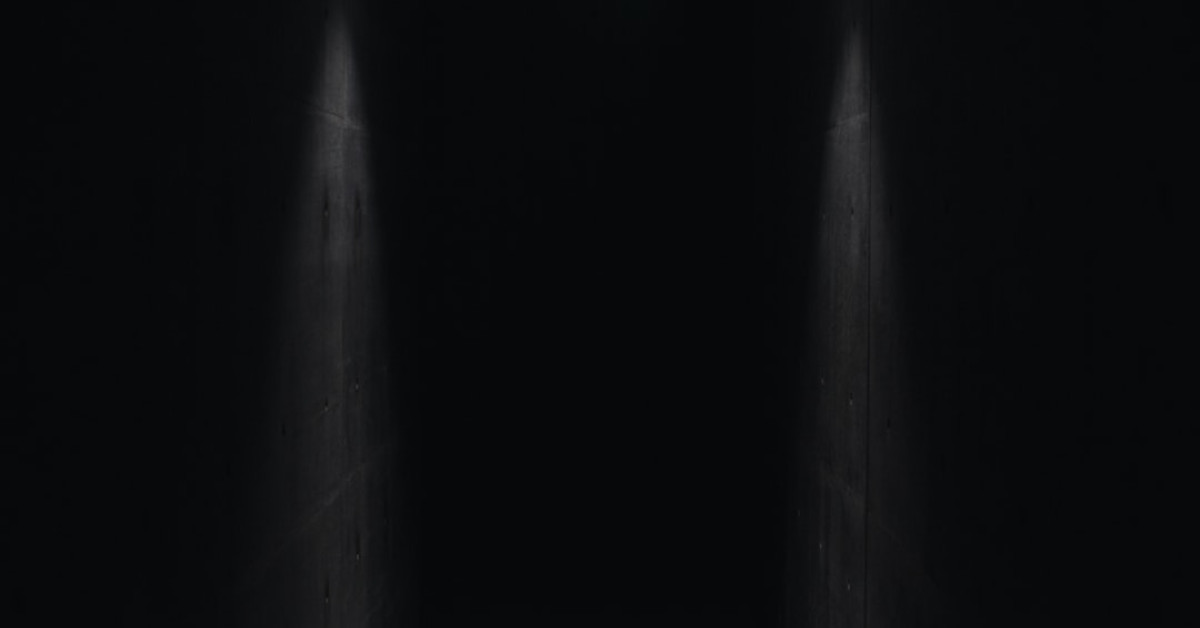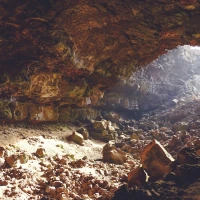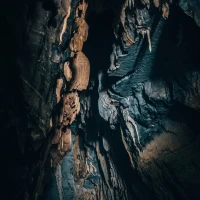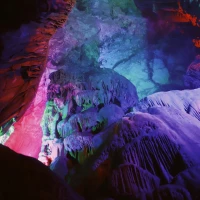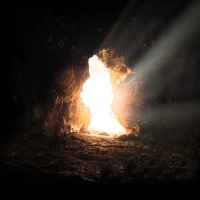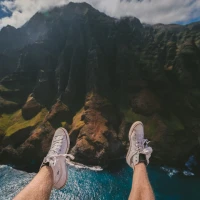The call of the abyss, the allure of the unknown, the thrill of exploration—these elements combine to make cave diving one of the most exhilarating and perilous adventures available to daredevil thrill-seekers and cinema audiences alike. Cave diving has long been a subject that tantalizes viewers with its blend of beauty and terror. In the world of film, it provides a backdrop that is ripe for high tension and dramatic storytelling. The isolation and the darkness inherent in this extreme sport intensify the horror when things go awry, making it a perfect setting for films that aim to grip audiences with fear and awe.
Cinema has long taken us on these subterranean expeditions, capturing the essence of diving into unexplored territories. These horror movies not only thrill us but also push the boundaries of what characters—and by extension, viewers—can endure when pitted against nature’s formidable obstacles. Let’s plunge into the depths of cave diving in cinema, where the promise of discovery is equally matched by the peril of the plunge.
The Intrigue of Underwater Cinematography
The task of bringing the underwater world to life on the big screen is a challenge that has fascinated filmmakers for decades. It combines technical prowess with an artistic touch to create scenes that leave the audience breathless.
Crafting Tension Underwater
Evocative underwater scenes require a careful balance of shadow and light, silence and sound. The claustrophobic confines of a submerged cave system serve as a natural pressure cooker where any number of things can go wrong:
- Equipment failure
- Disorienting darkness
- Encounters with unexpected underwater creatures
- The ever-present threat of the bends
These factors make cave diving horror movies a vehicle for an immersive viewing experience ripe with tension.
Technical Considerations for Filming Underwater
Underwater cinematography calls for specialized equipment to capture the intricate details of the deep. Cameras must be housed in waterproof cases, and lighting must be carefully managed to prevent loss of visibility. Directors and cinematographers grapple with these challenges to deliver the heart-stopping moments that define the genre.
Unfolding Horror: Key Cave Diving Films
Throughout the years, there have been films that have utilized the eerie backdrop of underwater caves to elevate their horror and suspense. Let’s take a deep dive into a few of these cinematic offerings.
“Sanctum” (2011)
Sanctum is a gripping tale about a group of cave divers who embark on a treacherous expedition. Facing unforeseen natural disasters, they must navigate through the planet’s least accessible cave systems.
- Panic-inducing scenarios: As they find themselves trapped and running out of supplies, the film deftly portrays the acute psychological and physical stresses of cave diving.
- Visual mastery: Visually evident are the detailed depictions of submerged passageways and the relentless onslaught of water that the characters must battle against.
“The Descent” (2005)
While not exclusively about cave diving, The Descent leverages the terror of being trapped in the dark with added monstrous horror. This film is a masterclass in using the subterranean setting to amplify fear, with the caverns providing a labyrinthine stage for the survival horror narrative.
- Creature features: To its claustrophobic environment, The Descent introduces a fearsome humanoid species, enhancing the film’s horror elements.
- Psychological thrills: The movie also tackles the psychological unraveling of its characters, making it a standout in horror cinema that involves cave exploration.
The Psychological Depths of Cave Diving Horror Movies
Cave diving presents unique psychological challenges to its practitioners, both in reality and fiction. Movies that feature these themes tap into our deepest fears, confronting the vulnerability of human life against the vast, indifferent power of nature.
Encountering the Unknown
In a cave diving horror movie, characters often face creatures or phenomena that defy understanding, confronting the limits of human knowledge and endurance. The unfathomable depths of the underwater world become a metaphor for the subconscious, harboring terrors that resonate with primal fears.
Isolation and Claustrophobia
Few things are as isolating as being miles beneath the earth’s surface, submerged in water, with only a finite supply of air. The impenetrable darkness serves as a breeding ground for paranoia and terror, which cave diving films explore:
- Characters often grapple with the weight of their own mortality.
- The unbreakable silence of the deep can amplify inner demons, mirroring the characters’ emotional turmoil.
Navigating Physical and Emotional Currents
The very act of cave diving demands a synergy of physical prowess and emotional resilience. Films in this niche draw on these demands to weave intricate narratives that explore the human spirit when tested to its extremes.
Tropes and Themes in Cave Diving Cinema
The genre has given rise to distinctive tropes and themes that resonate with viewers:
- The battle against time and the elements
- The struggle for survival against overwhelming odds
- The revelation of characters’ true natures under duress
Building Suspense in Enclosed Waters
Creating suspense in the limited confines of cave systems is a task that filmmakers execute with precision. Every air pocket, rock crevice, and narrow passage becomes a tool for heightening the tension, making full use of the setting to add layers to the narrative.
The Technical Triumph of the Genre
Behind every thrilling sequence of a cave diving horror movie, there is a triumph of technical skill that brings these remarkable stories to life. From the divers and stunt coordinators to the special effects teams and editors, a squadron of professionals work to ensure authenticity and believability.
Special Effects and Realism
Balancing special effects with realism is crucial in maintaining the film’s tension without breaking the spell of the narrative:
- Practical effects, like bubbles or debris, enhance the underwater aesthetic.
- CGI and post-production work are intricately woven to create believable otherworldly cave systems.
The Role of Sound Design
Sound design plays a pivotal role in delivering the atmospheric depth needed in such films:
- The muffled sounds of breathing apparatus heighten the sense of being underwater.
- The use of silence can be profoundly more terrifying than any soundtrack.
The Future of Cave Diving in Film
As technology advances, so does the potential for more intense and realistic portrayals of cave diving on screen. Virtual reality, 3D technology, and cutting-edge special effects continue to push the boundaries of what we can expect from this genre.
Innovations in Filmmaking
Emerging filming techniques and technologies promise an even more immersive and visceral viewing experience:
- 360-degree cameras: Can give viewers a diver’s-eye view of the underwater realm.
- Motion capture technology: Potential to create even more lifelike and fear-inducing creatures.
The Evergreen Appeal of Survival Stories
The appeal of cave diving horror movies endures, as audiences remain fascinated by stories of human survival against the elements. These narratives speak to both our desire for adventure and our innate fear of the unknown, with cave diving serving as the ultimate frontier.
Conclusion: Embracing the Thrill and Horror of Cave Diving in Cinema
Cave diving films capture a unique blend of beauty, horror, and the human spirit. They not only present visually stunning panoramas but also burrow into the depths of the human psyche. As viewers, we are compelled by the dangerous allure of plunging into the unknown. We vicariously experience the terror and exhilaration of confronting our darkest fears. Plunge into darkness with cave diving cinema, and discover a world where the thrill of discovery meets the terror of the abyss.
Whether you’re a diving enthusiast, a horror aficionado, or a cinephile chasing the thrill of edge-of-your-seat suspense, the world of cave diving horror movies has something to entice and enthrall. As filmmakers continue to explore these watery depths, the genre stands poised to captivate audiences for years to come, ensuring that the eerie call of the deep will continue to echo through the annals of film history.
